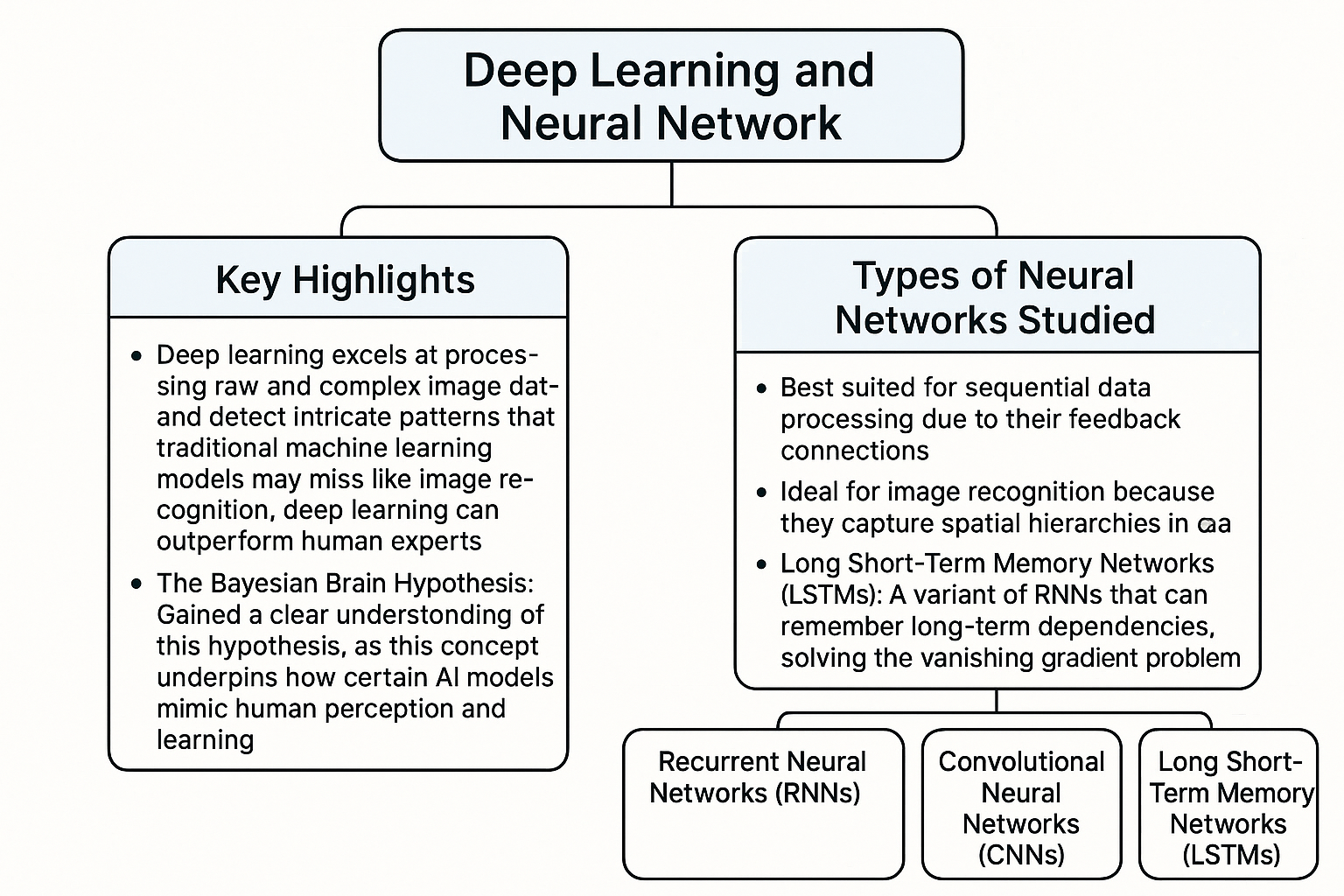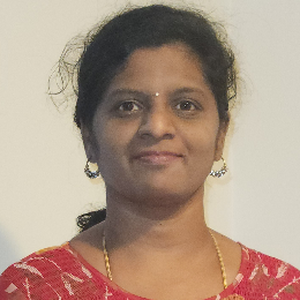Deep Learning and Neural Networks


Reflection:
Through my exploration of machine learning, I have gained a deeper understanding of how different learning paradigms enable models to make accurate predictions and decisions.
The bot interactive experience not only brainstormed and reinforced my understanding that machine learning is not just about algorithms but also about how data, iteration, and feedback work together to enable intelligent systems to evolve and perform. This reflection underscores my appreciation for the interplay between theory and practical application in developing effective machine learning solutions.
Chatbot -Machine Learning Training Methods Coach (an AI chatbot)
Link:https://student.schoolai.com/s...
Key Highlights:
The chatbot mentored on the best approach and actions to be taken out of the supervised unsupervised and reinforcement algorithms
Labeled and Unlabeled data
Learnt on the training data by labelling through data preparation, model initialization, prediction, Loss calculation and Optimization with iteration and model generalization techniques.
Unlabeled data approach includes clustering, dimensionality reduction, density estimation.
Optimization techniques
Optimizing the reinforcement learning through Q-Learning, SARSA, Actor- Critic methods.
Optimizing unsupervised learning by K-Means or PCA and supervised learning by Linear regression and Random forests.
Repetition
Iterating over data multiple times to improve understanding its patterns by:
-Progressive Refinement of Parameters
-Better Pattern Learning
-Reduction of impact from noise
-SGD algorithm based on small batch of data
Values:
-Achieved a deep understanding of CNN architectures, which have been proven to reach >95% accuracy in large-scale image recognition tasks and >90% sensitivity in medical imaging diagnostics.
-Applied reinforcement learning algorithms (Q-Learning, Actor-Critic) where cumulative rewards improved by ~10% compared to baseline methods.
-Learned unsupervised dimensionality reduction techniques (PCA) capable of reducing feature dimensions by 95% while preserving 90% of data variance.
References:
Knill, D. C., & Pouget, A. (2004). The Bayesian brain: The role of uncertainty in neural coding and computation. Trends in Neurosciences, articulating early theoretical foundations of Bayesian coding in perception
Abrol, A., et al. (2021). Deep learning outperforms standard machine learning in biomedical research applications. Nature Communications. NCAA study shows deep learning's advantage in complex brain imaging tasks.
